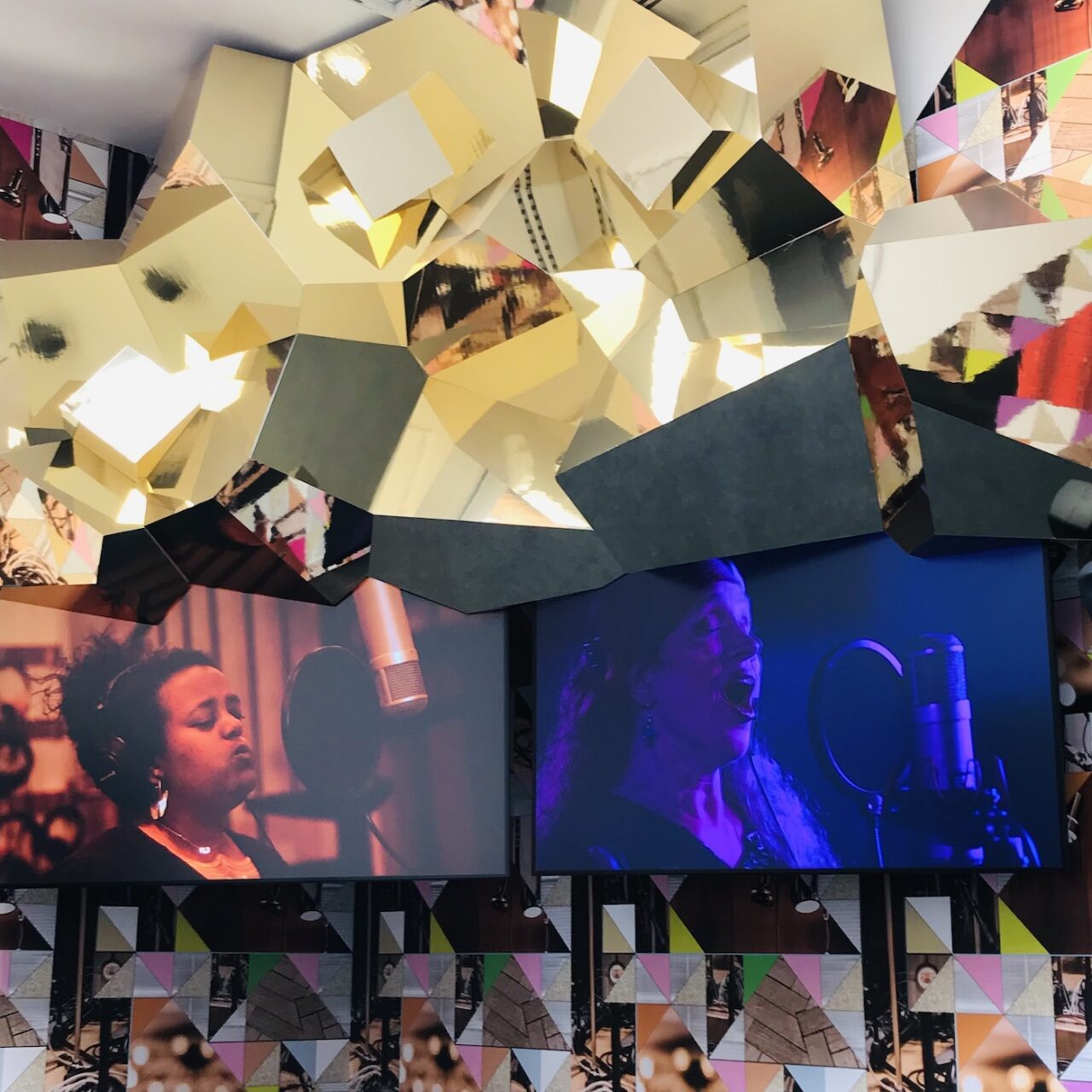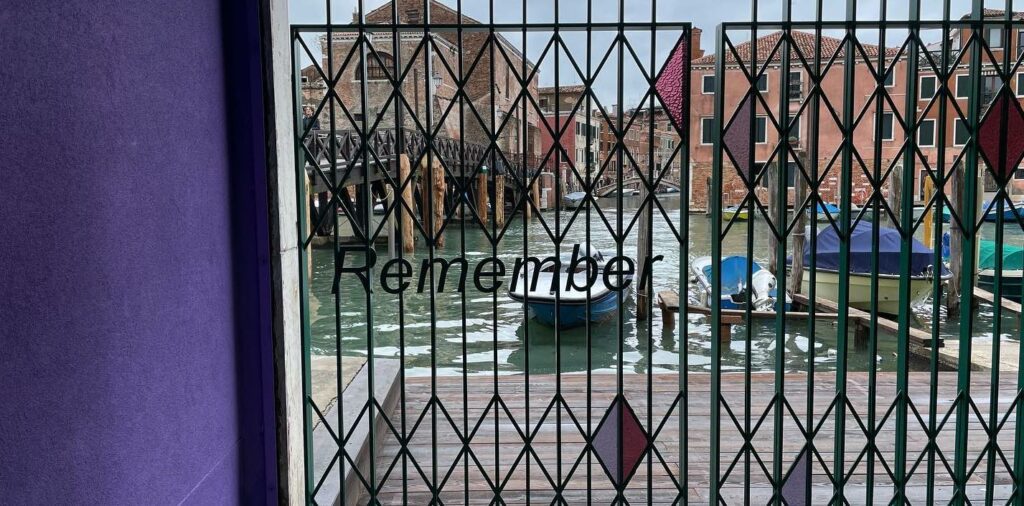

Mia Harrison réfléchit à la manière dont l’exposition a permis aux femmes artistes de formuler, de construire et de contextualiser leurs rêves individuels et collectifs.
« Et si nous considérons comme un luxe notre besoin de rêver, notre désir d’amener nos esprits au plus profond de notre foi, alors nous renonçons à la source de notre puissance, de notre féminité : nous renonçons aux mondes futurs auxquels nous aspirons »
– Audre Lorde, « La poésie n’est pas un luxe »
RÉVEIL. Mon séjour à la biennale de Venise en avril dernier me semble encore être l’écho des derniers instants d’un rêve. Je peux toujours sentir les textures des œuvres — les images et les dialogues qui s’attardent dans mes pensées, pour finalement se reposer comme des draps qui retombent lentement sur le lit après avoir été éventés.
Curatée par Cecilia Alemani, première femme italienne à assurer le rôle de curatrice de la biennale, la 59e édition a initié une plateforme où les femmes ont pu formuler, construire et contextualiser leurs rêves individuels et collectifs. Des rêves qui, à une autre époque, auraient été délaissés par sacrifice et pour survivre.
Le titre de l’exposition principale de la biennale, The Milk of Dreams [le lait des rêves], est emprunté à un livre de la surréaliste britannico-mexicaine Leonora Carrington qui imagine « un monde dans lequel chaque personne peut changer, être transformée, devenir quelque chose ou quelqu’un d’autre ». Malheureusement, je n’ai pas pu me défaire de la première impression que m’a laissée ce titre : la nourrice. La tradition des femmes noires qui nourrissent les enfants des autres me hantait. À bien des égards, ces dernières continuent de donner leur essence et leur temps pour nourrir les rêves des autres.
Pourtant, les expositions des pavillons nationaux présentées par Simone Leigh et Sonia Boyce célèbrent la création matérielle et immatérielle des femmes noires pour d’autres femmes noires. Feeling Her Way de Sonia Boyce et Sovereignty de Simone Leigh évoquent les visions d’ancêtres vivant·es ou disparu·es, en tirant les ficelles et les fils à travers le temps et les frontières imaginaires.
Feeling Her Way est une méditation sur la collaboration et un portail vers le paysage sonore et visuel Black British, dans le sens où le concept britannique de Black aspire à développer une voix collective entre les membres de la diaspora africaine, sud-asiatique et caribéenne qui continuent de faire face aux répercussions du passé impérial et colonial de la Grande-Bretagne. Boyce a travaillé avec cinq musiciennes noires (Poppy Ajudha, Jacqui Dankworth, Sofia Jernberg, Tanita Tikaram et la compositrice Errollyn Wallen) pour composer un chœur de réponses à la question fondamentale : à quoi ressemble la liberté ? Pour elles, ce terme ne relève pas d’un voyage individuel.
Il s’agit plutôt d’un processus collectif au cours duquel chaque personne responsable de la création du monde dans lequel nous nous réveillons chaque jour participe à sa réimagination. Les vidéos et les artefacts forment une ode aux fréquences négligées et aux artistes féminines noires qui ont non seulement maintenu le pouls de la musique britannique, mais aussi établi des codes pour exister malgré les obstacles. Le son se déverse d’une pièce à l’autre tandis que des nappes de voix façonnent l’image d’ensemble — l’expression des femmes noires est sans limites dans sa forme et sa capacité. Elle est réactive, générative et collaborative. Elle regarde vers l’avant et vers l’arrière, reliant contexte et conversations.
Lorsque je me suis approchée du pavillon américain, j’ai senti que j’étais enfin arrivée. Je me suis retrouvée transportée dans un paysage onirique — une image composite de l’architecture, de la culture matérielle et de la spiritualité noires. L’espace était paisible. L’utilisation minimale du son et la disposition des objets laissaient de l’espace pour la réflexion. Le silence m’invitait à faire une pause et à rester aux côtés des œuvres. Il me conviait à intérioriser les strates de conversations présentes dans chaque pièce et les échanges entre les œuvres d’art. Dans Sovereignty, le transcendant et le banal coexistent. Leigh utilise la sculpture afin de composer des récits hybrides en fusionnant des réalités spirituelles africaines traditionnelles avec de nouvelles expressions pour fabriquer des objets rituels de la diaspora noire. Mais ce plaisir était souvent rompu par la concurrence des personnes qui cherchaient à se placer devant les œuvres et à les regarder uniquement à travers des écrans lumineux. Il était difficile d’observer des badaud·es blanc·hes se presser autour du portrait de Sharifa (2022) et la prendre nonchalamment en photo. Ces personnes sont parties aussi vite qu’elles sont arrivées. N’ont-elles pas remarqué les lignes architecturales de son pied ? La manière dont on pouvait s’abîmer à travers son regard tandis qu’il nous observe en retour ?
Cette expérience de regardeuse a terni mon impression de l’expérience. Peut-être étais-je surprotectrice. C’est un moment historique et voir de l’art noir présenté sur une si grande scène me donnait envie de m’y immerger complètement. L’œuvre méritait un niveau d’engagement au-delà de la simple prise d’un selfie suivi de l’effleurement de la surface à travers les filtres Instagram. Je pense qu’il est temps de redéfinir la façon dont nous nous engageons avec l’art, à la fois individuellement et collectivement, loin de la consommation abrutissante et vers une digestion intentionnelle. Je souhaitais inviter les autres visiteur·ses à prendre leur temps et à comprendre comment les provocations de l’artiste opéraient à chaque niveau. Comment l’espace était-il animé ou subverti pour raconter le récit ? Comment les objets étaient-ils placés les uns par rapport aux autres ? Quel dialogue se déroulait entre eux ? Quel contexte pouvait-on trouver pour circuler dans l’installation ? Quel était notre rôle dans cet espace ?
Toutefois, j’étais fière des réalisations des femmes noires lors de cette biennale — la première à compter 90 % de femmes, dont un grand nombre non-blanches. Après avoir relu mes notes de voyage, mes conversations sur WhatsApp et les bribes d’impressions conservées en mémoire, je réfléchis au rêve comme pratique de transformation collective, où les mystères des symboles codés sont empreints de rituels culturels et où l’interprétation des rêves est confiée aux personnes sans doute les plus qualifiées — les artistes.
Depuis l’enfance, le rêve a été pour moi un exutoire pour l’exploration spirituelle et créative. Le paysage onirique est devenu un lieu où je pouvais exprimer consciemment mes désirs et mes craintes, mais aussi un espace où il m’était possible de rendre visite à mes ancêtres disparu·es et me connecter à des histoires et des événements antérieurs à ma naissance, avec la possibilité de les reconstruire ou même de les transformer. Les associations que nous établissons avec l’imagerie onirique sont également liées à notre manière d’expérimenter l’existence. Dans ma réflexion sur la biennale, je me pose les questions suivantes : en quoi les rêves constituent-ils un mode collectif de mémoire, de souvenir ? Comment l’acte de rêver se prolonge-t-il dans la vie éveillée ?
Mia Imani Harrison est une artiviste (art + activiste) originaire du nord-ouest du Pacifique et poète expérimentale. À une époque où les mots blessent plus que les bâtons et les pierres, elle utilise son art comme activisme.
59TH VENICE BIENNALE
More Editorial